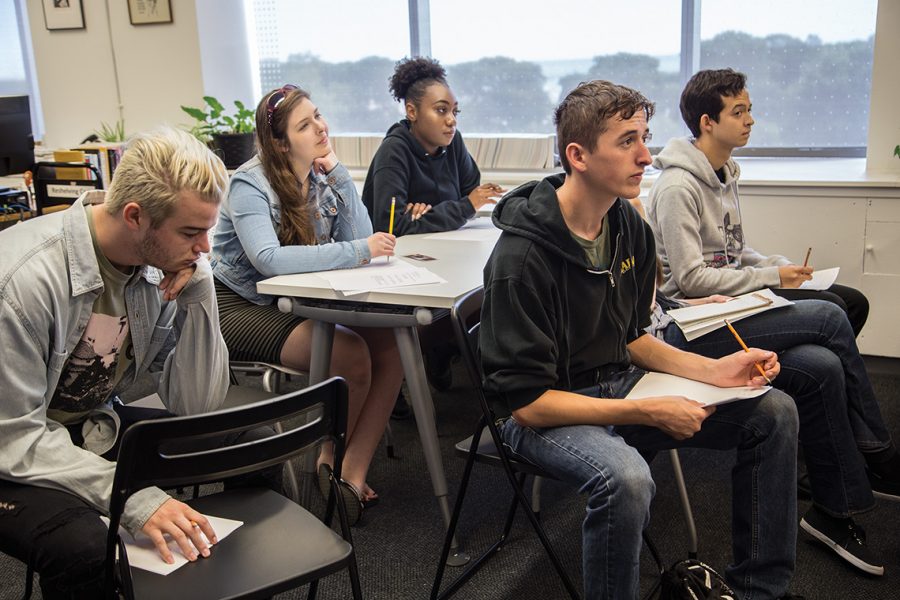Students analyze trap music in ‘Grammar of Rap’ workshop
Students learned how to apply the concept of semiotics to hip-hop artist Young Thug’s album, Slime Season 3, in a workshop hosted by rap scholar Nandi Marumo.
September 19, 2016
Columbia students dove deeper into trap music’s meaning with a workshop, held Sept. 14 in the 618 S. Michigan Ave. Building, and hosted by rap music scholar Nandi Marumo.
Students learned about the concept of semiotics—the study of signs and symbols in a given subject matter—and how they can use it in terms of modern music styles during the “Grammar of Rap” workshop presented by The Center for Black Music Research.
“[Semiotics] is good for cutting edge contemporary rap music because it forces you to throw all previous expectations out the window,” Marumo said. “From there, it allows you to build a new guideline for how to approach the music.”
The workshop consisted of students listening to songs from hip-hop artist Young Thug’s 2016 album, Slime Season 3, and identifying “signs.” These signs, according to Marumo, are anything written or spoken that produces meaning.
Freshman cinema art + science major and attendee Tom Groebe said the idea of analyzing this musical genre in an educational setting was unfamiliar at first.
“I had never had a classroom experience where you’re listening to trap music,” Groebe said. “It was really interesting because we were analyzing it, thinking about it critically and going beyond just listening.”
Marumo, a graduate student in Afro-American Studies at the University of Massachusetts Amherst, was studying semiotics in her literature theory class and wrote a final paper on its application to music.
After spending the summer interning at CBMR, Marumo spoke with the center’s Archivist and Digital Librarian, Laurie Moses, about conducting semiotics workshops.
“[Semiotics is] very academic but surprisingly applicable to a number of fields, and that was really neat that she thought of how to apply semiotics to rap,” Moses said.
Marumo performed her first workshop with high schoolers at the Harold Washington Library Center’s YOUmedia digital learning space. “Grammar of Rap” was her second workshop.
“People came ready to engage and to go places with me—even around things they might not feel super comfortable discussing,” Marumo said.
Young Thug was the chosen artist for the workshop because his music is sometimes considered “controversial” and “unintelligible,” she added.
“He gets a bad rap of people saying his music is meaningless and doesn’t make sense,” Marumo said. “What I wanted to do with this workshop is provide people a set of tools through which to analyze his music.”
She said all attendees provided feedback and were receptive to the use of semiotics.
“They were masters right off the bat,” Marumo said. “They were willing to suspend their disbeliefs and go in with me and figure out what’s happening. They shared far more than I expected them to.”
Groebe said he views semiotics as something he can see himself using in the future.
“I can apply it to other musicians and styles as well,” Groebe said. “We can assess where we are today with music and maybe predict where we might go from there, and better understand what comes next.”








